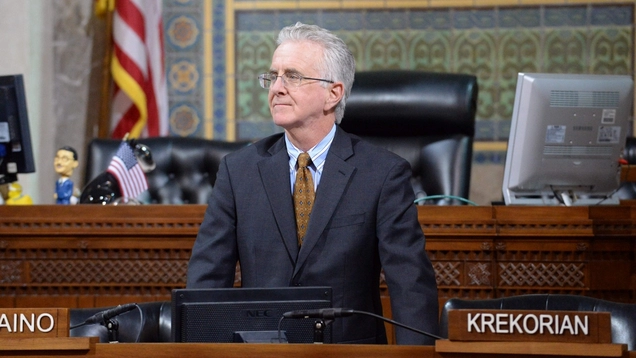
You may have heard on the radio this week a series of stories about manufacturing jobs in the United States. One segment, called "What Gets Made in LA is Way More Than Movies," highlights that the LA area is the biggest manufacturing hub in the country. With a great climate -- weather and business -- and the two biggest ports in the Americas, the aerospace, technology, apparel, medical equipment, printing, plastics and furniture industries, among others, are still going strong and remain home to hundreds of thousands of good jobs. The importance of LA to aerospace manufacturing is clear when you consider that 80 percent of the nuts, bolts and other fasteners that hold airplanes together are made right here in Southern California. One of the challenges this and other industries face, however, is finding a pool of skilled workers ready to accomplish the technical work. There is a need for government and industry to partner with more local schools to make them useful training grounds for these types of good, middle-class jobs.Another important way to create good jobs for Angelenos is by building up the areas of our local economy that are lagging behind the manufacturing sector. That challenge was my focus at this week's City Council Jobs Committee meeting where my colleagues and I discussed my motion to study Jobs and Economic Development Incentive (JEDI) zones and other geographic incentives that our city could use to stimulate job growth in many neighborhoods, particularly those that need it most.
My JEDI zones motion seeks to designate parts of the city to receive special economic development benefits, like rebates for businesses that expand operations or hire new local employees, expedited permit processing, and reductions or rebates on the business tax for targeted industries. The aim is for the city to do what we can to lure new businesses and industries into Los Angeles and to spur growth for those that have already made a significant investment by doing business in our communities. The JEDI zones would have a special focus on revitalizing underserved communities and also, I believe, pave the way for an economically thriving future.
The Jobs Committee also discussed some tools that the state government has given cities to help with investment in specific geographic areas. One of these tools, called the Enhanced Infrastructure Financing District (EIFD), assists cities, like Los Angeles, by financing construction, improvement and rehabilitation of public infrastructure-roads, bridges, water reclamation plants, parks and libraries-in a specific area. Another tool authorizes cities to create a Community Revitalization Investment Authority (CRIA) to invest a portion of property taxes gathered from local agencies in order to finance job creation, develop affordable housing and reduce high crime rates.
As chair of the Jobs Committee, I will continue to keep you informed about the status of my JEDI zones motion and the rest of these economic stimulus tools that we are considering for Los Angeles. My goal is to use all of them in a coordinated way to help businesses thrive, to create good jobs and, ultimately, to revitalize our communities.
If you have questions or thoughts to share, please email me at [email protected] or comment on my website.